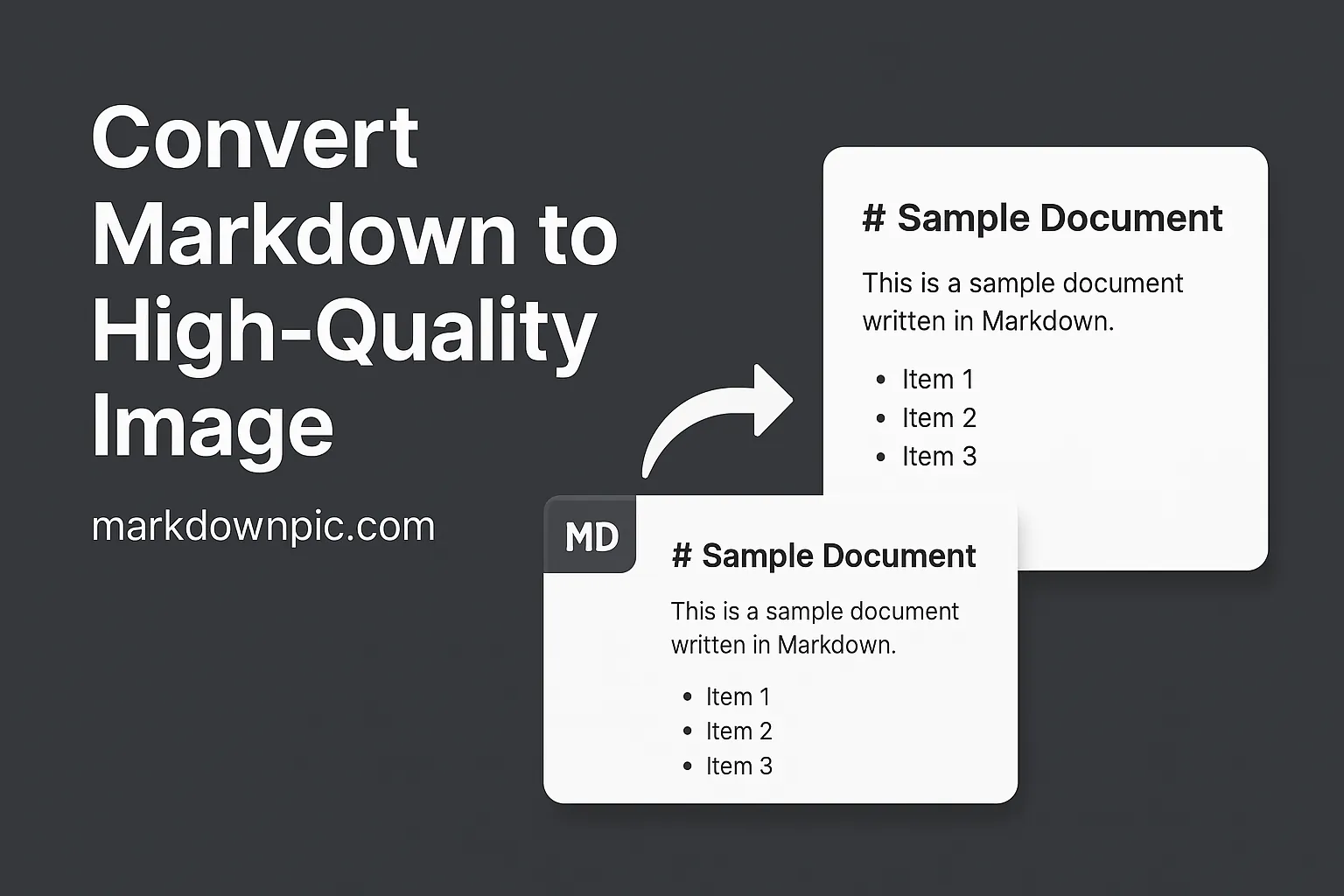How to Write Clean and Structured Markdown for Maximum Reusability
Markdown is elegant in its simplicity — but when used poorly, it becomes messy, inconsistent, and hard to repurpose.
This guide shares battle-tested practices to help you write Markdown that’s clean, structured, and ready for reuse — in blog posts, documentation, long image exports (like markdownpic.com), PDFs, and even HTML publishing.
🧱 1. Use Logical Heading Hierarchy (Always!)
Many Markdown authors default to random heading levels (##, ####, etc.) without structure. Instead, treat your Markdown like HTML:
# Main Title
## Section 1
### Subsection 1.1
#### Sub-subsection 1.1.1
🔁 Reuse Benefit: Clean heading levels allow better Table of Contents (TOC) generation, accessibility parsing, and consistent rendering across platforms.
🗂 2. Separate Content from Presentation
Never hardcode styling in your Markdown. That means:
- ❌ Avoid HTML
<span>,<font>, inline styles - ✅ Prefer semantic writing
Bad:
<span style="color:red;font-size:20px">Warning:</span> Don't do this!
Better:
**⚠️ Warning:** Don't do this!
🔁 Reuse Benefit: Your content becomes themable (e.g., markdownpic.com can style it without manual rewrites).
✅ 3. Use Consistent Syntax for Lists, Code, Quotes
Stick to one style and format it precisely:
For Lists:
- Item one
- Item two
- Subitem
For Code Blocks:
```python
def hello():
print("Hello Markdown!")
```
For Blockquotes:
> This is a note.
>> This is a nested note.
🧼 Cleaner Markdown means less post-processing when exporting or converting to image/PDF.
🏷 4. Use Metadata (Front Matter) to Future-Proof
Even if you’re not using Hugo or Jekyll now, writing front matter helps your file become portable in the future.
---
title: "Effective Markdown"
date: 2025-07-28
tags: [markdown, writing]
description: "Learn how to write clean markdown."
---
🔁 Reuse Benefit: Adds machine-readable context for static site generators, export tools, and indexing systems.
🧪 5. Test in Multiple Renderers
Markdown may look fine in your VS Code, but render differently in:
- GitHub
- Notion
- Obsidian
- Chrome (via tools like markdownpic.com)
- Jupyter Notebook
- Readme previews
💡 Pro Tip: Use your own toolchain or markdownpic.com to check for layout consistency, especially if you’re exporting long-form visuals.
🧰 6. Create Reusable Snippets and Templates
If you write similar content often (e.g., checklists, code explanations), save reusable snippets:
<!-- reusable snippet -->
## ✅ Task Checklist
- [ ] Define problem
- [ ] Write solution
- [ ] Test result
Use text expanders, templates, or your editor’s snippet system to insert them.
🔁 7. Normalize Line Breaks and Spacing
Use a single blank line between paragraphs and avoid excessive newlines. Also:
- Don’t mix tabs and spaces
- Ensure UTF-8 encoding
- Keep lines under 80–120 characters for version control readability
📦 Good Markdown is as clean as code.
📤 8. When You Export, Use the Right Tool
Tools like pandoc, grip, or browser-based platforms like markdownpic.com can help you:
- Export Markdown as PDF, PNG, or HTML
- Preserve themes and spacing
- Add watermark or custom styles
🧭 Bonus: Lint Your Markdown
Use a Markdown linter like:
markdownlint README.md
Or add VSCode extensions like Markdown All in One to auto-check:
- Broken links
- Heading order
- Spacing issues
🧠 Summary
| Principle | Why It Matters |
|---|---|
| Logical Headings | Enables TOC and parsing |
| Semantic Markup | Style flexibility |
| Code/List Formatting | Visual and export clarity |
| Metadata Use | Future content compatibility |
| Renderer Testing | Avoids layout bugs |
| Snippet Reuse | Scales productivity |
| Spacing Rules | Version control readability |
| Export Tools | Cross-format output |
✨ Start Writing Better Markdown Now
Whether you’re writing documentation, notes, blogs, or tutorials — good Markdown is an asset. It’s readable by humans, machines, and export tools alike.
Try your next Markdown draft in markdownpic.com — and see how structured writing leads to beautiful, high-quality image exports for sharing and publishing.
